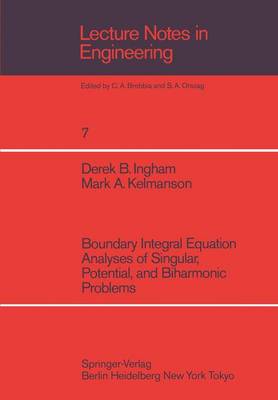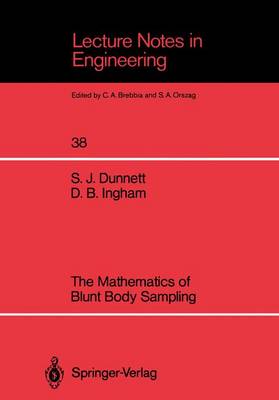Lecture Notes in Engineering
2 primary works
Book 7
Boundary Integral Equation Analyses of Singular, Potential, and Biharmonic Problems
by Derek B Ingham and M. A. Kelmanson
Published 1 August 1984
Harmonic and biharmonic boundary value problems (BVP) arising in physical situations in fluid mechanics are, in general, intractable by analytic techniques. In the last decade there has been a rapid increase in the application of integral equation techniques for the numerical solution of such problems [1,2,3]. One such method is the boundary integral equation method (BIE) which is based on Green's Formula [4] and enables one to reformulate certain BVP as integral equations. The reformulation has the effect of reducing the dimension of the problem by one. Because discretisation occurs only on the boundary in the BIE the system of equations generated by a BIE is considerably smaller than that generated by an equivalent finite difference (FD) or finite element (FE) approximation [5]. Application of the BIE in the field of fluid mechanics has in the past been limited almost entirely to the solution of harmonic problems concerning potential flows around selected geometries [3,6,7]. Little work seems to have been done on direct integral equation solution of viscous flow problems. Coleman [8] solves the biharmonic equation describing slow flow between two semi infinite parallel plates using a complex variable approach but does not consider the effects of singularities arising in the solution domain. Since the vorticity at any singularity becomes unbounded then the methods presented in [8] cannot achieve accurate results throughout the entire flow field.
Book 38
The Mathematics of Blunt Body Sampling
by S. J. Dunnett and Derek B Ingham
Published 24 October 1988
Particle samplers are widely used in workplaces in order to determine the concentration of airborne particles in the atmosphere. They generally operate by drawing air, with the aid of a pump, through one or more orifices in the sampler body and housed within the sampler is a filter through which the air is subsequently drawn. The airborne particles are collected on the filter and their concentration is determined. Various samplers have been designed for this purpose including "static" samplers, which are located in a fixed position in a working environment and determine the dust concentration averaged over a prescribed period of time at that one point, and "personal" samplers which are mounted on a working person near to the breathing zone. The ORB sampler, a static sampler designed by Ogden and Birkett (1978) to have approximately the same entry efficiency, for particles with aerodynamical diameter up to at least 25~m, as a human head equally exposed to all wind directions for wind speeds between 0 and 2. 75m1s, is shown in Fig. l. l and examples of personal samplers are shown in Fig. 1. 2a, b and c and represent a single 4mm hole sampler, a seven hole sampler and a 25mm open face filter holder respectively. These three samplers are some of the most commonly used personal samplers for sampling the total airborne concentrations of workplace dusts in Britain.

